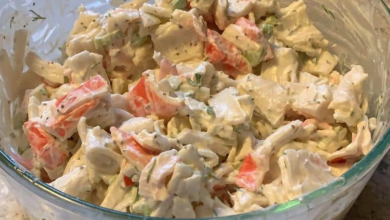You’ll Never Guess What Paprika Is Really Made Of — and Why It’s So Good for You

🔥 Paprika: The Unexpectedly Spicy Story Behind That Red Dust in Your Spice Rack
For many home cooks, paprika is just a finishing touch—dusted over deviled eggs, stirred into soups, or added to meat rubs for color. But have you ever stopped to wonder what paprika actually is? You might be in for a flavorful surprise.
Just ask my mother-in-law’s friend. After years of faithfully seasoning her roasted veggies with paprika, she was stunned to learn it’s nothing more than dried red peppers ground into powder. Her reaction sparked a round of laughter—and a deeper curiosity about this often-overlooked spice.
🌶️ So, What Is Paprika, Exactly?
At its core, paprika is made from red peppers—sweet bell types or sometimes spicier chilies—that have been dried and ground. The resulting flavor, heat, and color vary based on the pepper variety and drying method. A few popular styles include:
| Type | Flavor Profile | Origin |
|---|---|---|
| Sweet Hungarian | Mild, sweet, and fruity | Hungary |
| Hot Hungarian | Spicy and bold | Hungary |
| Spanish Smoked | Earthy, rich, and smoky | Spain (oak-smoked) |
That humble jar hiding on your spice shelf? It’s packed with centuries of culinary history—featuring prominently in dishes like Hungarian paprikash, Spanish paella, and smoky Tex-Mex marinades.
😂 A Peppery Revelation in the Kitchen
When my mother-in-law explained that paprika comes from peppers, her friend was genuinely shocked.
“Wait… seriously? Just peppers?”
It was the kind of discovery that made us all laugh. Suddenly, we were trading food trivia: cinnamon is tree bark, vanilla comes from orchid pods, and nutmeg is actually a seed. Even the most seasoned cooks can be surprised by the simplest truths—and that’s part of the joy of learning in the kitchen.
🌱 More Than Just a Pretty Sprinkle—It’s Good for You
Paprika’s appeal isn’t limited to taste and color—it also carries an impressive list of health perks, particularly beneficial for older adults and anyone looking to add a little extra nutrition to their meals:
🛡️ Rich in antioxidants: Full of carotenoids and natural compounds that help fight cellular damage
🍊 High in vitamin C: Certain varieties can rival oranges in their immune-boosting power
💪 Pain-soothing properties: Spicy types contain capsaicin, known for reducing inflammation and soreness
❤️ Heart-friendly: May help improve blood flow and support healthy blood pressure levels
A tiny pinch of paprika? It’s flavor and function in one.
🧂 Five Paprika Nuggets to Spice Up Your Day
- Hungarian cooking uses multiple grades of paprika, from mild to fiery hot
- Spanish varieties are smoked over oak, giving them their signature depth
- It’s a key player in countless spice mixes, from fajita seasoning to dry BBQ rubs
- Some blends include bits of pepper skin for added texture and richness
- Its vivid color was once used to dye cloth—and it still stains your fingers!
💬 Your Final Dash of Flavor
Paprika isn’t just “that red stuff.” It’s a blend of history, heritage, and humble peppers turned into something bold and beautiful. So next time you sprinkle it on a dish, take a second to appreciate what’s in your hands—centuries of flavor, tradition, and maybe even a bit of spice-induced storytelling.
And when someone inevitably asks what paprika really is, go ahead—share the secret. Odds are, you’ll make them smile—and maybe even inspire their next kitchen adventure.



